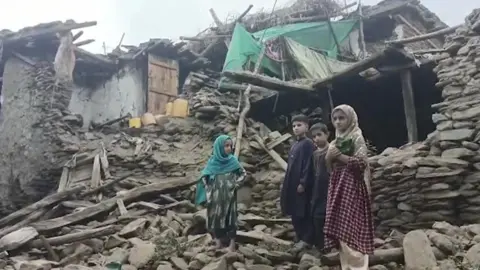A 6.0 magnitude earthquake has struck Afghanistan's mountainous eastern region, with authorities saying hundreds of people have been killed.
The quake hit at 23:47 local time on Sunday (19:17 GMT) and its epicenter was 27km (17 miles) away from Jalalabad, the country's fifth-largest city, in eastern Nangarhar province. It was shallow - only 8km deep - and was felt as far as 140km away in the capital, Kabul, and in neighboring Pakistan.
The initial quake was followed by a series of large aftershocks, which may have contributed to further casualties. Early reports indicate significant damage across both Nangarhar and Kunar provinces, with emergency services struggling to reach the affected areas due to difficult terrain and landslides.
The Taliban's interior ministry has stated that more than 600 people are feared dead, but they warn that this figure could rise as assessments continue. The road leading to the epicenter has been blocked by landslides, prompting authorities to deploy helicopters for rescue operations.
Access to the worst-hit regions remains limited, with many homes thought to be buried under rubble. The disaster follows a weekend of heavy flash flooding across the region, adding to the devastation.
Why don't we know more?
The rugged terrain complicates access to the affected areas and disrupts communication, delaying updates on the situation. The international community's ability to verify information and provide assistance has also been hindered by the Taliban's control since August 2021, which led to many aid agencies suspending operations.
Can Afghanistan cope?
With 23 million Afghans in need of humanitarian aid amidst an economic collapse, the situation is precarious. Most foreign donations have been halted, and sanctions persist, complicating relief efforts. The main medical facility in Jalalabad is overwhelmed with patients, exacerbating the crisis.
Why are earthquakes particularly damaging in Afghanistan?
Afghanistan is situated on multiple fault lines, making it earthquake-prone. Shallow earthquakes tend to cause more damage, and many buildings are constructed from materials that are not earthquake-resistant. Landslides triggered by seismic activity further increase the risk of destruction in mountain villages.




















